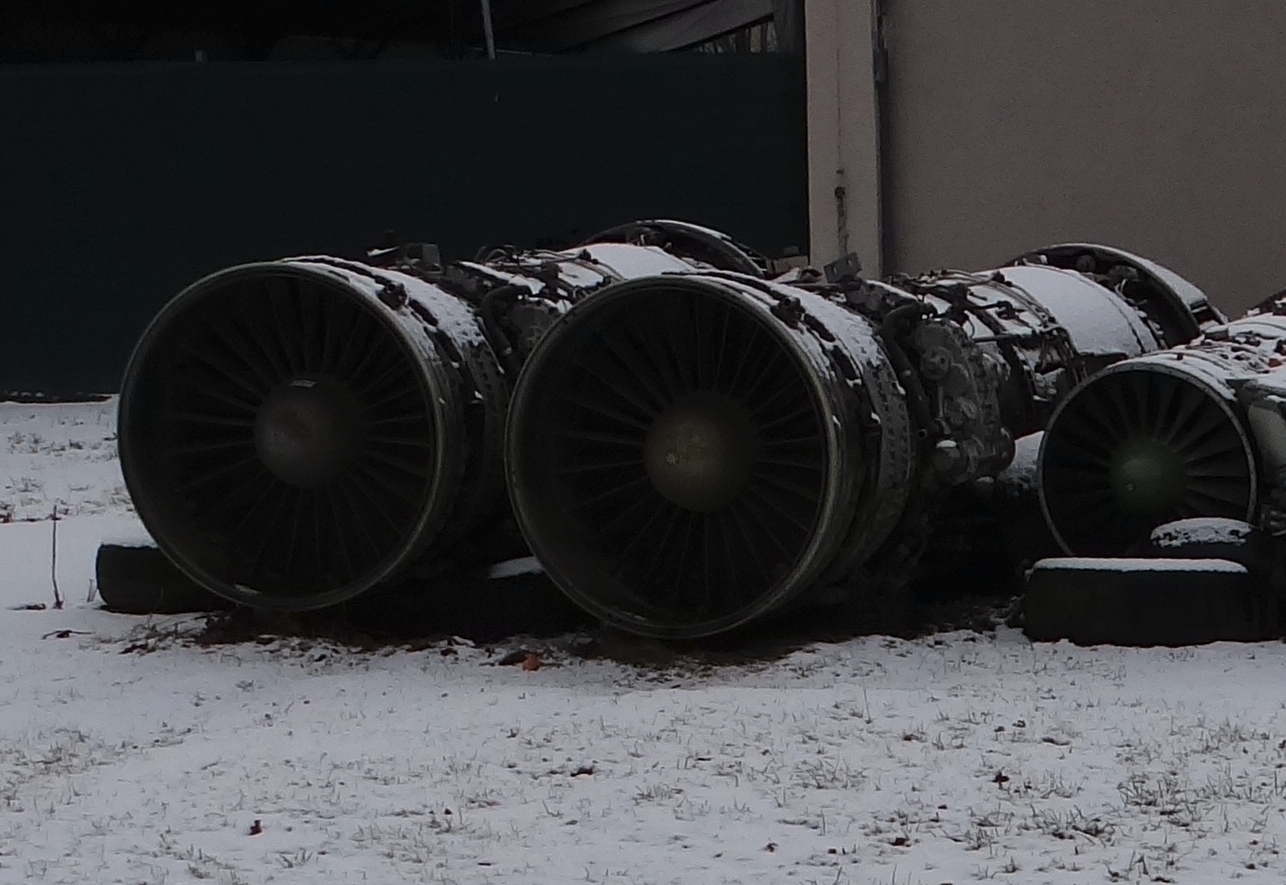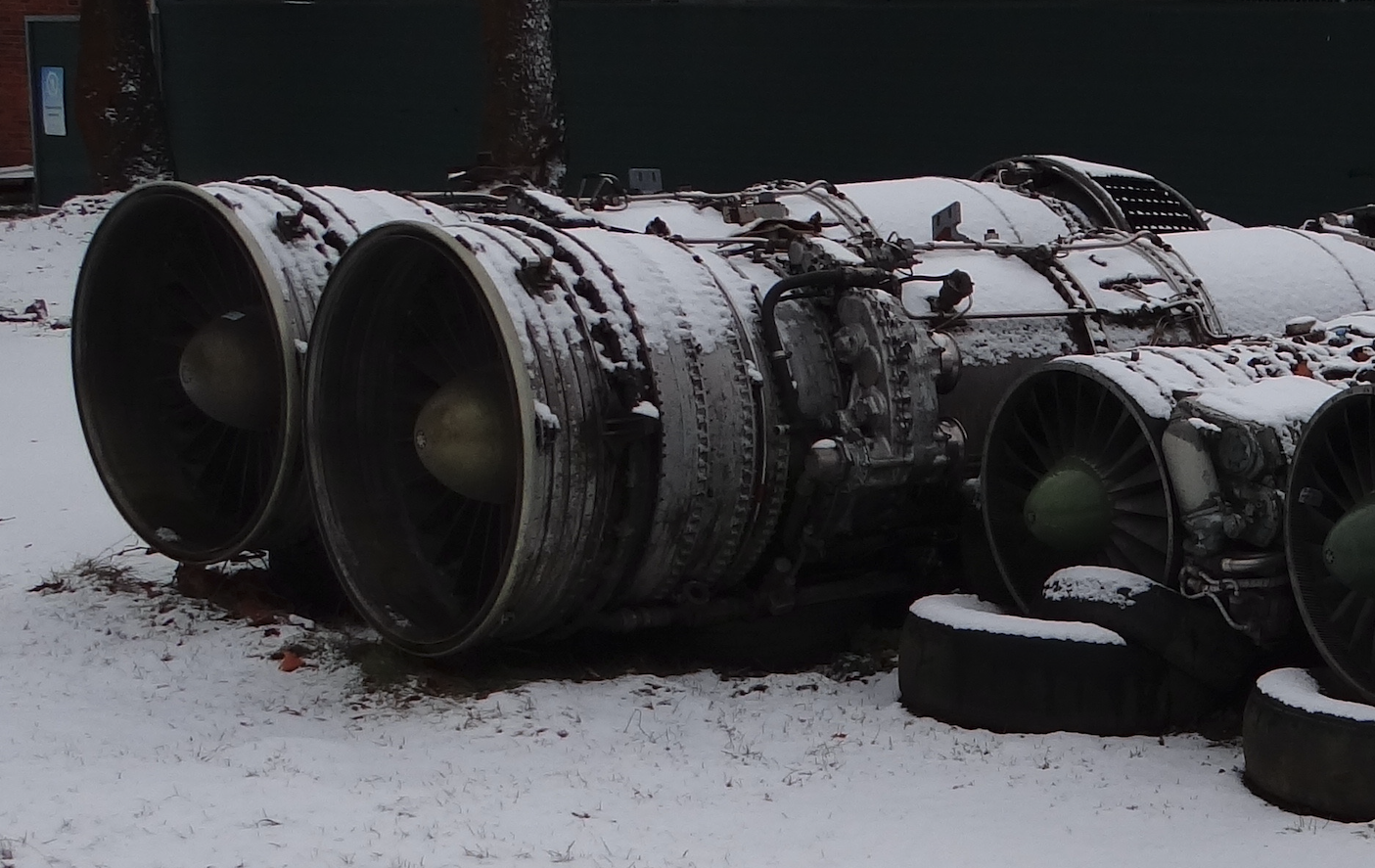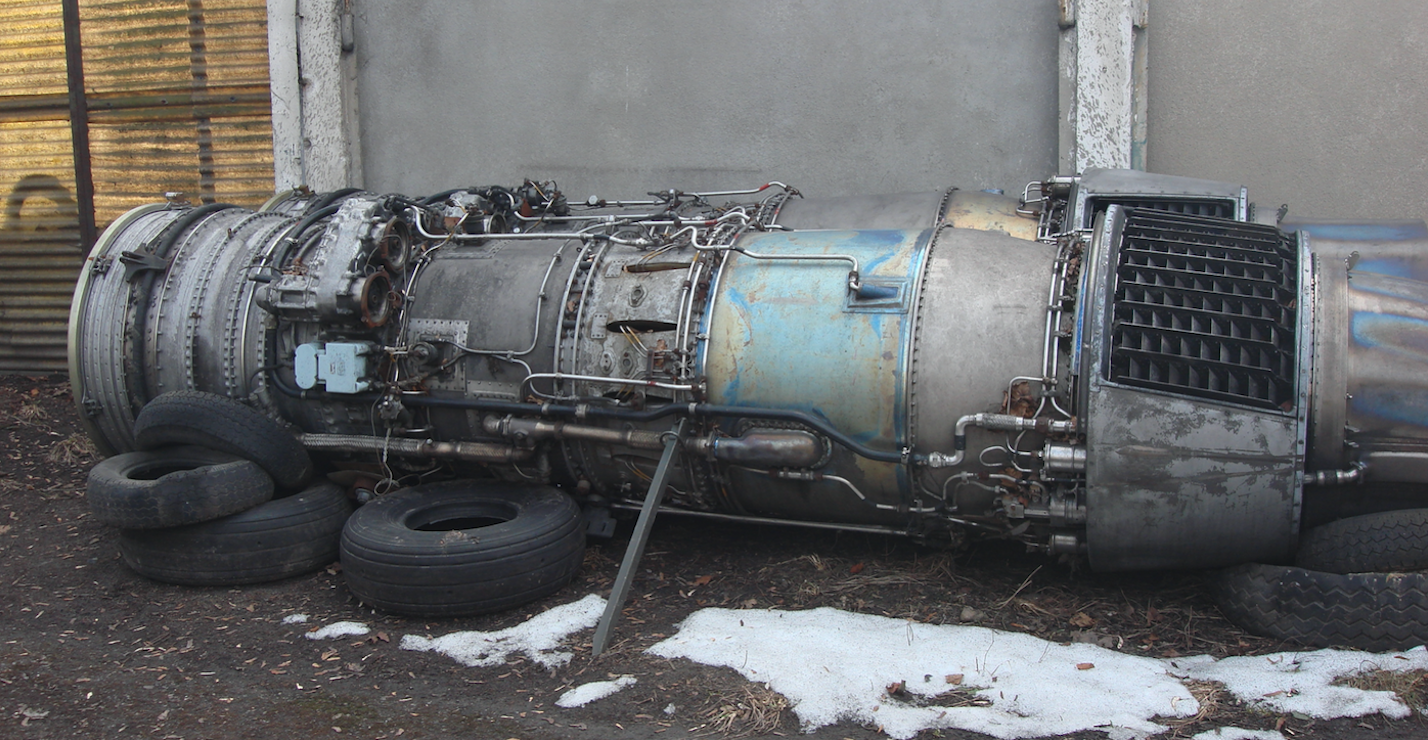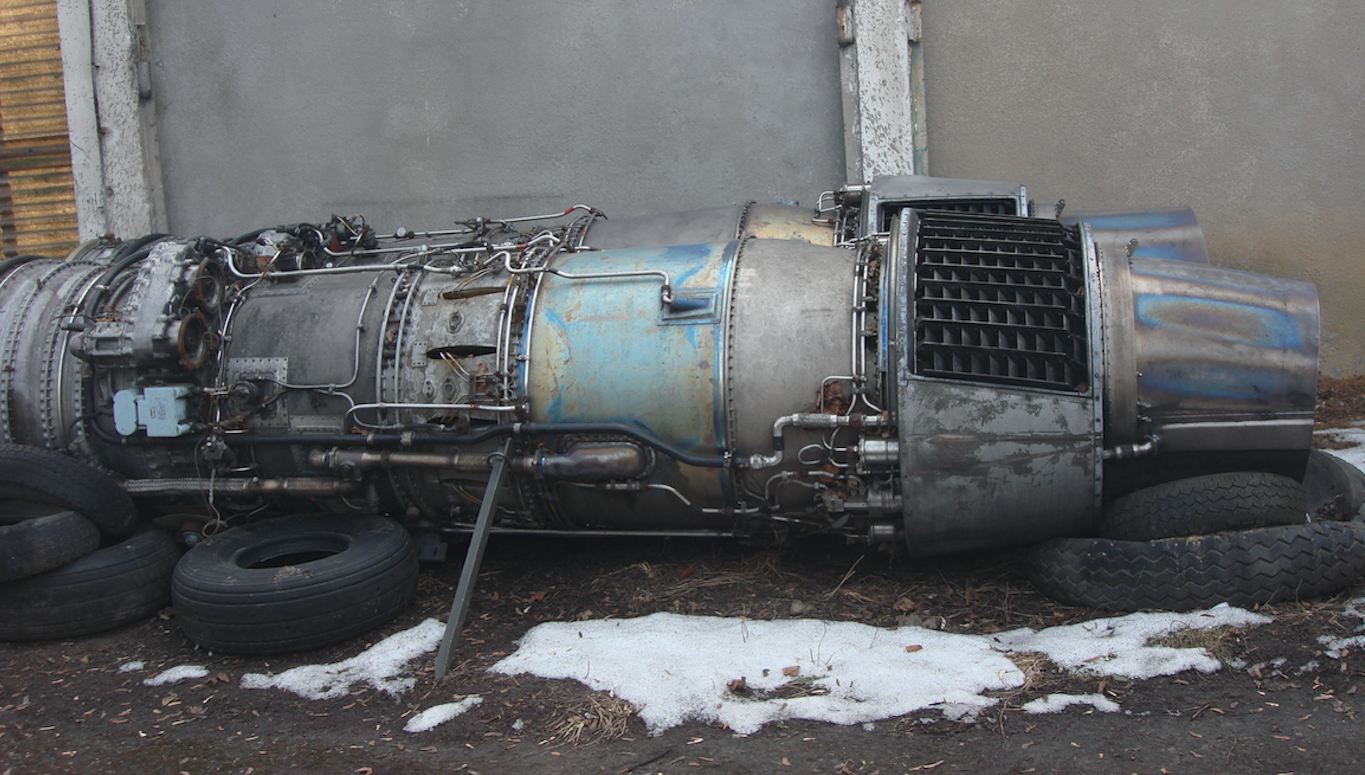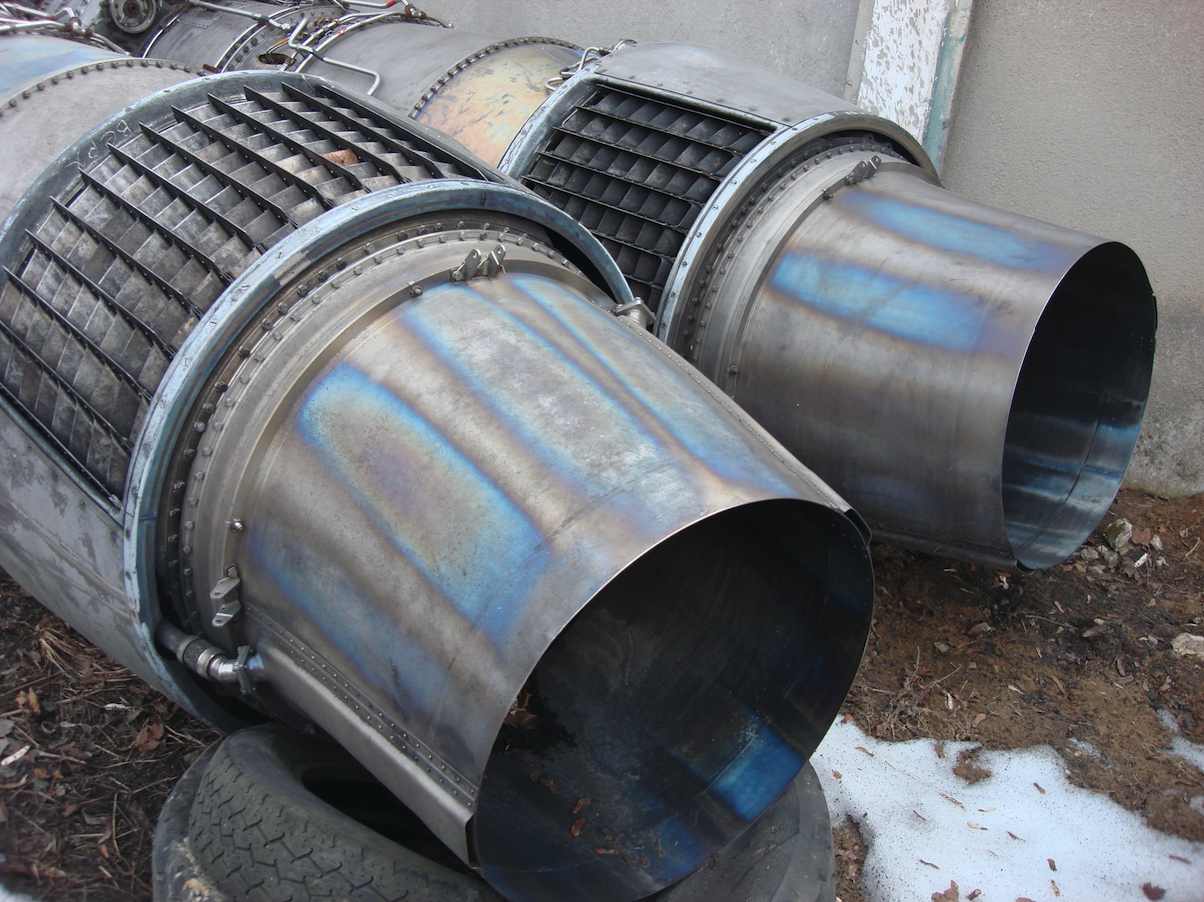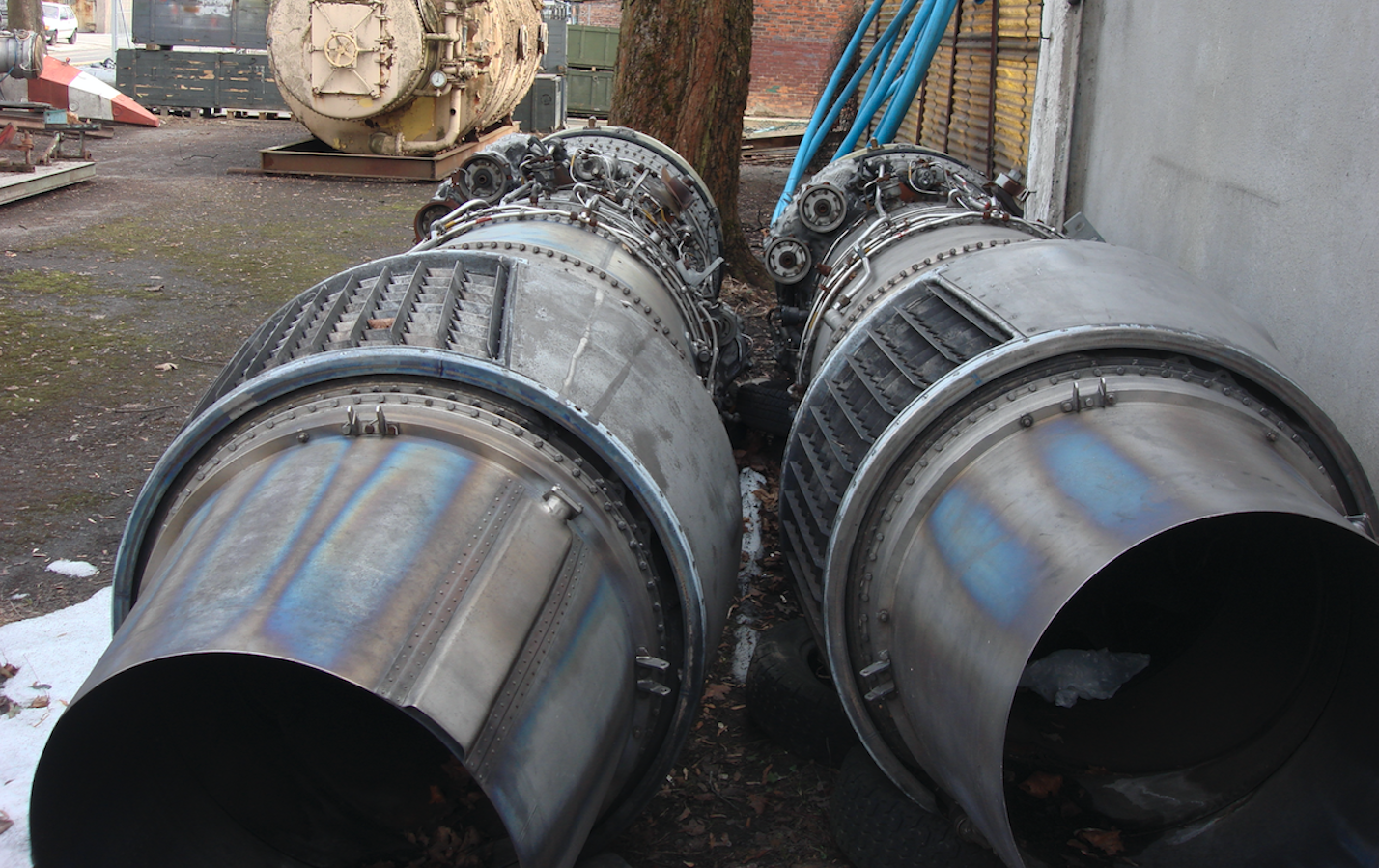Kraków 2022-12-09
Silnik turboodrzutowy, dwu-wałowy, dwu-przepływowy Sołowiew D-30.
W rozwoju silników turboodrzutowych było kilka istotnych wynalazków. Jednym z nich był układ dwu-wałowym, a drugim był układ dwu-przepływowy.
Silnik Bristol Olimpus był pierwszym na świecie silnikiem dwu-wałowym. Początkowo nosił oznaczenie Bristol BE.10 Olimpus i powstał w firmie Bristol dla samolotów klasy V. Miał mieć ciąg 10 000 lbf (44,48 kN). Pierwsze testy w powietrzu przeprowadzono w 1950 roku, na samolocie Avro Vulcan. Jego wersje rozwojowe służyły do napędu samolotu uderzeniowego BAC TRS-2, a później jako Rolls-Royce – Snecma Olimpus 593 komercyjnego Concorde.
Pierwsze silniki dwu-przepływowe powstały równolegle w kilku firmach w USA i UK, w połowie 50-lat XX wieku. Silniki te dały początek silników turbo-wentylatorowych, które cechują się dużą siłą ciągu.
W państwie moskiewskim pierwszym silnikiem jedno-przepływowym, dwu-wałowym był R-11, który użyto do napędu samolotu myśliwskiego Mikojan i Guriewicz MiG-21. Ale silniki jednoprzepływowe nie za bardzo nadawały się do napędu samolotów pasażerskich, z uwagi na ich duże zużycie paliwa. Natomiast miały tę zaletę, że przy małej powierzchni czołowej dobrze nadawały się do szybkich samolotów bojowych.
Prace nad silnikiem dwu-wałowym i dwu-przepływowym podjęto w CCCP z początkiem 60-lat XX wieku. Zadanie podjęto w zespole kierowanym przez inżyniera Paweł Aleksandrowicz Sołowiew.
Paweł Aleksandrowicz Sołowiew (Па́вел Алекса́ндрович Соловьёв 1917-1996) był jednym z konstruktorów silników lotniczych w CCCP. Przez wiele lat kierował biurem OKB-19 w Permie. Urodził się we wsi Aleksino w obwodzie Iwanowskim. W 1934 roku, ukończył 9-klasową szkołę i zapisał się do Instytutu Lotnictwa w Rybińsku. Po jego ukończeniu w kwietniu 1940 roku dołączył do zespołu w OKB-19 w Permie (obecnie Biuro Silników Lotniczych). Dzięki przynależności do komunistycznej partii szybko awansował po stopniach kariery. W 1948 roku, był zastępcą szefa projektów. W 1953 roku, został głównym projektantem w OKB-19 w Permie. W 1981 roku, został głównym projektantem silników lotniczych w CCCP.
Silnik D-20.
Pod kierunkiem Pawła Sołowiewa prace nad nowym jedno-przepływowym silnikiem ruszyły w 1955 roku. Zadaniem było opracowanie silnika dla bombowca M-4, czego nie zrealizowano. W 1960 roku, powstał silnik D-20, który postanowiono wykorzystać w samolocie Tu-124 (pomniejszona wersja pasażerskiego Tu-104). Był to pierwszy silnik dwu-przepływowych w CCCP. Zbudowano 700 (795) egzemplarzy silników D-20. Silnik w eksploatacji był od 1962 do 1979 roku.
Dane T-T silnika D-20:
Silnik D-20 ma masę 1 468 kg, długość 3,304 m, średnicę 0,915 m. Ma ciąg 5 500 kG. Ciąg na wysokości 11 000 m przy prędkości przelotowej wynosi 1 150 kG. 3-stopniowa sprężarka niskiego ciśnienia (pierwszy stopień pracuje jako wentylator w dwóch przepływach), 8-stopniowa sprężarka wysokiego ciśnienia, komora spalania z 12 puszkami płomieniowymi, 1-stopniowa turbina wysokiego ciśnienia, 2-stopniowa turbina niskiego ciśnienia. Stopień dwu-przepływu wynosi 1:1. Temperatura przed turbiną max 1 057 stopni C. Całkowita kompresja sprężarki wynosi 14:1. Przepływ powietrza 113 kg/s. jednostkowe zużycie paliwa wynosi 0,88 kg / kG · h przy starcie i 0,72 kg / kG · h podczas przelotu. Łopatki sprężarki są mocowane do dysku na zasadzie „jaskółczego ogona”.
Silnik D-30 II.
W dniu 29 lipca 1963 roku, pierwszy lot wykonał prototyp Tu-134 napędzany silnikami Sołowiew D-20, o ciągu 2 x 52,9 kN (2 x 5 394,30 kG). Już w tym czasie w Permie pracowano nad ulepszonym silnikiem, który otrzymał oznaczenie D-30. Prace nad silnikiem TRDD (Турбореактивный двухконтурный двигатель) Sołowiew D-30 ruszyły w 1963 roku. Celem było zbudowanie nowego napędu dla samolotu Tu-134. Punktem wyjścia był silnik D-20. W 1967 roku, silnik był gotowy. Produkcja seryjna ruszyła w zakładach w Permie, a od 1972 roku w Rybińsku. W 1970 roku, opracowano drugą wersję, a w 1982 roku wersję trzecią.
Dane T-T sinika D-30:
Długość silnika z odwracaczem ciągu wynosi 4,734 m. Długość silnika bez odwracacza ciągu wynosi 3,984 m Średnica 1,05 m. Masa silnika suchego 1 765 kg. Ciąg silnika wynosi 68,00 kN (6 934 kG). Ciąg na wysokości przelotowej 11 000 m z prędkością Ma-0,8 wynosi 14,22 kN (1 450 kG). Temperatura przed turbina wynosi 1 316 stopni C. Zużycie paliwa 0,77-0,79 kg/kGh.
Silnik TRDD Sołowiew D-30 jest dwuprzepływowy, dwu-wałowy. 3-stopniowa sprężarka niskiego ciśnienia pracuje w obiegu zimnym i gorącym, jako wentylator. 8-stopniowa sprężarka wysokiego ciśnienia, komora spalania, 1-stopniowa turbina wysokiego ciśnienia, 2-stopniowa turbina niskiego ciśnienia. Może mieć zamontowany odwracacz ciągu. Uruchamiany jest automatycznie sprężonym powietrzem. Ponieważ silnik jest produkowany do chwili obecnej (2016 rok) został wyposażony w elektroniczny system sterowania. Dla zainicjowania zapłonu służą dwie świece. System olejowy automatyczny. Olej pracuje w układzie zamkniętym. Silnik pracuje na naftach typu: T-1, TC-1, PT.
Polskie samoloty Tu-134 były wyposażone w: dwa silniki turbo-wentylatorowe Sołowiew D-30 w wersji Tu-134, o ciągu 2 x 64,5 kN lub w dwa silniki turbo-wentylatorowe Sołowiew D-30 II w wersji Tu-134 A, o ciągu 2 x 66,7 kN wyposażone w odwracacze ciągu. Jeden silnik podczas rejsowego lotu spala średnio 1 178 litrów na godzinę, czyli 19,64 litrów na minutę. Aby przelecieć dystans 100 km jeden silnik potrzebuje średnio 196 litrów nafty lotniczej. Są to dane średnie, ale uwzględniające także start i lądowanie maszyny. Tankowanie samolotu odbywało się z autocysterny, która podjeżdżała przed prawe skrzydło.
Rozruch silników następuje poprzez zewnętrzny agregat rozruchowy umieszczony na podwoziu samochodu ciężarowego Ził. Samochód podjeżdżał tyłem pod lewy silnik. Możliwy jest także rozruch silnika D-30 II bez lotniskowych źródeł zasilania przy pomocy dodatkowego turbogeneratora APU umieszczonego w ogonie kadłuba sprężonym powietrzem. Ten turbogenerator służy także do wentylacji, ogrzewania i klimatyzacji kabiny. Wytwarza energię elektryczną, kiedy nie pracują silniki główne. Takie urządzenie umożliwia eksploatacje samolotu na lotniskach pozbawionych zaplecza technicznego. Samoloty PLL LOT przechodziły przeglądy i remonty w Mińsku.
Silnik D-30 KU.
Jeszcze w 60-latach powstała wersja D-30 KU (Д-30КУ) i D-30 KP (Д-30КП) o większym ciągu, przeznaczona do napędu samolotów Tu-154 M, Ił-62 M, Ił-74. Zbudowano około 8 000 egzemplarzy. Silnik nie tylko został powiększony ale także rozbudowany. 4-stopniowa sprężarka niskiego ciśnienia, 11-stopniowa sprężarka wysokiego ciśnienia, komora spalania, 1-stopniowa turbina wysokiego ciśnienia, 2-stopniowa turbina niskiego ciśnienia. Przy piątym i szóstym stopniu sprężarki wysokiego ciśnienia umieszczono upust powietrza, które pełnią funkcje zabezpieczenia przeciw-pompażowego. Układ działa automatyczne powyżej 79 % prędkości obrotowej silnika. Te same wloty służą do uruchamiania silnika sprężonym powietrzem z lotniskowego agregatu lub drugiego silnika. Po rozdzieleniu powietrza na kanał zimny i gorący, a przed pierwszym stopniem sprężarki wysokiego ciśnienia umieszczono regulowane kierownice aerodynamiczne. Są one sterowane automatycznie i sprężone z układem przeciw-pompażowym. Silniki te były pierwszymi silnikami w CCCP które miały wyraźnie większy przepływ zimny w porównaniu do gorącego (2,54:1).
Dane T-T silnika D-30 KU:
Średnica 1,46 m. Długość 4,83 m. Masa własna 2 305 – 2 320 kg. Masa całkowita 2 668-2 675 kg. Spręż powietrza 17:1. Temperatura gazów przed turbiną 1 660 stopni Celsjusza. Średnica wentylatora 1 455 m. Przepływ powietrza 264-269 kg/s. Ciąg 105,72 kN (10 780 kG). Ciąg na prędkości przelotowej Ma-0,8 i pułapie 11 000 m wynosi 28,10 kN (2 865 kG). Zużycie paliwa 0,69-0,71 kg/kGh. Stopień dwu-przepływu silnika wynosi 2,54:1.
Do napędu Polskich samolotów pasażerskich Ił-62 M wykorzystano silniki z biura Sołowiewa D-30 KU o ciągu 4 x 107,9 kN, (4 x 11 500 kG).
Liczne wersje silnika D-30 wynikły z jego dobrych charakterystyk, zwłaszcza na tle silnika Kuzniecow NK-8. Większy ciąg, mniejsze zużycie paliwa, mniejsza awaryjność oraz brak lepszej propozycji. Opracowano także wersję poza-lotniczą silnika do zastosowań przemysłowych.
Pamietajmy jednak, że wykonanie silników D-30 KU było niestaranne. W trakcie produkcji i remontów dokonywano licznych niewłaściwych modyfikacji, które powodowały awarie, a te prowadziły do katastrof. Na przykład zmieniano łożyska na takie, które miały mniej wałeczków. Z powodu korozji powierzchniowej obrabiano (toczono) na nowo wał, przez co był on cieńszy i słabszy.
Na bazie silnika D-30 opracowano silnik D-30F6 (Д-30Ф6) z dopalaczem i bez odwracacza ciągu, dla samolotu bojowego MiG-31, ale z silnikiem D-30 ma on niewiele wspólnego.
Będąc przy silniku D-30 wspomnimy o głębokiej modernizacji silnika w końcu 90-lat. W firmie Saturn opracowano wersję oznaczoną D-30KP-3 „Burlak” (Д-30КП-3 „Бурлак”). Zasadniczą zmianą było wprowadzenie nowego wentylatora. Ciąg silnika wzrósł o kolejne 9,81 kN (1 000 kG). Zużycie paliwa spadło o 11 %. Zmniejszył się hałas i emisja spalin.
Ostatnim samolotem, który został wyposażony w silniki D-30 była łódź latająca Be-42.
Opracowano Karol Placha Hetman

